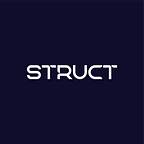Struct Primitives & Interest Rate Tranches (Part II)
Our previous post covered what Struct Primitives are and why we’ve chosen to develop Interest Rate Tranches. In this post, we will cover how we select our yield-bearing positions and the landscape of opportunities on Avalanche.
Interest Rate Tranches
Tranching an underlying yield-bearing position changes how the yield is distributed. This distribution follows a waterfall mechanic, which orders how the yield from a position is returned. At the end of the investment period, the principle and fixed rate is returned to investors who subscribed to the fixed-income tranche before the remainder is then passed on to investors that subscribed to the variable tranche. This distribution ultimately splits an investment position into slices, with financial terms suitable for specific investors. It also benefits the ecosystem by creating financial instruments with comparatively less risk than the underlying yield-bearing position.
Selection criteria for yield-bearing positions
Now that we understand how tranching works, we can run through how yield-bearing positions are selected. Initially, we will prioritize integration with protocols based on three core factors:
- Sustainable Yield — We focus on building our interest rate tranches on positions that accrue yield from sustainable cash flows.
- Strengthen the Ecosystem — We prioritize the development of products that strengthen the ecosystem.
- Security — Security is paramount. We will only launch new protocols on the platform once the respective integrations have been fully audited.
Integration Opportunities
Decentralized Exchanges
A decentralized exchange (DEX) is a peer-to-peer marketplace where users can trade cryptocurrencies in a non-custodial manner without the need for an intermediary to facilitate the transfer and custody of funds. We will be focusing on Automated Market Makers (AMM) that use a peer-to-pool model, such as TraderJoe, GMX, and Platypus Finance.
Yield Aggregators
Yield aggregators automate the process of harvesting rewards and socializing gas costs for users. Platforms such as Vector Finance and Echidna Finance also provide users with higher yields by allowing them to take advantage of the vote escrow tokens they have accumulated.
Yield Optimizers
Yield Optimizers such as Robovault develop strategies to maximize yield across multiple different protocols. Similar to Yield Aggregators, they also help with auto-compounding and the socialization of gas costs.
Decentralized Option Vaults (DOVs)
DOVs such as Ribbon Finance help investors deploy assets into options strategies to generate yield. It monetizes the high volatility of the underlying asset and injects this yield into Defi through the payment of option premiums, thereby solving the problem of diminishing returns from increasing sizes of AMM liquidity pools.
Insurance Funds
There are multiple types of insurance funds available on Avalanche. Protocols like Hubble Exchange have an insurance fund to act as a backstop for bad system debt. Others like Degis provide users with protection against smart contract risks. Insurance Funds are crucial to the health of the ecosystem, and the slicing of the risks being traded by these funds helps make it an investment that’s more desirable to investors.
Bridges
Bridges allow users to transfer assets between chains. Many of them such as Stargate and Synapse utilize liquidity pools to facilitate such transactions. Bridges are crucial to the success of any ecosystem. However, the risk it faces is mainly protocol specific.
Methodology
Regarding protocol integrations, we will be looking at the following metrics:
- Maturity — Measured as the time since launch, and a proxy for how lindy a protocol is.
- Yields — Does tranching result in yields that are higher than what is out there in the ecosystem?
- Audits & Bug Bounties — Based on the number of audits conducted and the reliability/reputation of the auditor.
- Ease of Integration — How much of the existing codebase needs to be changed to integrate with Struct’s protocol.
- Market-specific & protocol-specific risk — Tranching is good at mitigating market-specific risks but does not mitigate protocol-specific risks.
Struct Products
As mentioned in our previous articles Structured Financial Products combine Struct Primitives and other instruments available in the space. Struct’s Interest Rate Tranches aren’t constrained to the tranching of yield-bearing positions from external protocols. They can also be used to slice the risk of Struct Products. You’ll hear more from us on this in the future.
We hope you found this explanation of Struct Primitives useful and see why we believe they represent a powerful offering in the DeFi market.
For any questions on Struct Primitives, join our Discord community or email us at contact@struct.fi.
